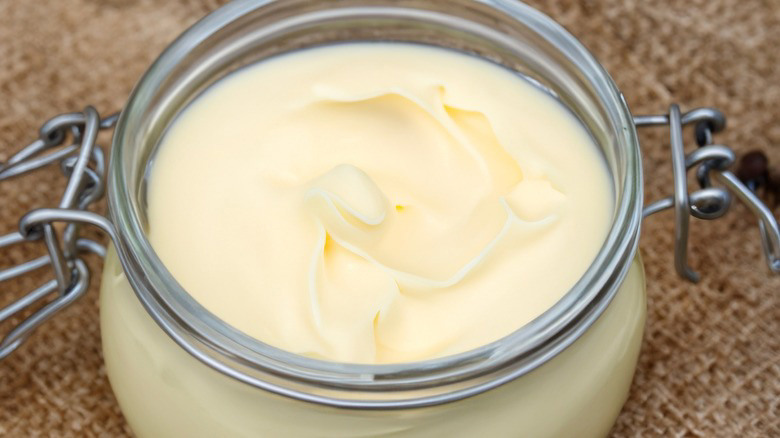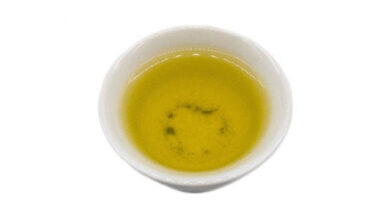Is Beef Tallow the Best Cooking Fat? A Professional Chef’s Complete Analysis

After decades of demonizing animal fats, professional kitchens worldwide are rediscovering what our grandparents knew all along – beef tallow might just be the ultimate cooking fat. But is beef tallow really the best cooking fat for your kitchen? Let’s dive deep into the science, performance data, and culinary applications that make this traditional fat a game-changer.
The Great Cooking Fat Debate: Where Beef Tallow Stands
Modern kitchens are flooded with cooking oil options, each claiming superiority. However, when you analyze performance metrics, nutritional profiles, and culinary results, beef tallow consistently outperforms popular alternatives across multiple categories.
Cooking Fat Performance Comparison
| Cooking Fat | Smoke Point | Stability | Flavor Impact | Health Score | Cost Efficiency |
| Beef Tallow | 400°F | Excellent | Rich, savory | A+ | High |
| Olive Oil | 375°F | Moderate | Fruity | B+ | Moderate |
| Avocado Oil | 520°F | Good | Neutral | B | Low |
| Coconut Oil | 350°F | Good | Sweet | B+ | Moderate |
| Vegetable Oil | 400°F | Poor | Neutral | D | High |
| Butter | 300°F | Poor | Rich | C+ | Moderate |
Why Professional Chefs Choose Beef Tallow
Superior Heat Stability
Scientific Analysis: • Smoke Point: 400°F (204°C) – ideal for most cooking methods • Oxidative Stability: Saturated fats resist breakdown under heat • Compound Formation: No harmful aldehydes or trans fats when heated • Molecular Structure: Stable triglyceride chains maintain integrity
Real Kitchen Impact: • Perfect searing without burning • No bitter off-flavors from breakdown • Consistent results across temperature ranges • Extended cooking times without degradation
Unmatched Flavor Enhancement
Flavor Profile Breakdown: • Umami richness: Natural glutamates enhance savory notes • Mouthfeel enhancement: Creates satisfying, full-bodied textures • Flavor amplification: Magnifies rather than masks ingredient flavors • Aromatic compounds: Develops complex aromas during cooking
Nutritional Superiority: The Science Behind the Fat
Fatty Acid Composition Analysis
Beef Tallow Fatty Acid Profile: • Saturated Fats (50%): Palmitic acid (26%), Stearic acid (14%), Myristic acid (3%) • Monounsaturated Fats (42%): Oleic acid (same as olive oil) • Polyunsaturated Fats (4%): Minimal oxidation-prone fats • Other Compounds (4%): Cholesterol, fat-soluble vitamins, antioxidants
Micronutrient Content per 100g
Fat-Soluble Vitamins: • Vitamin A: 15-50 IU (retinol and carotenoids) • Vitamin D: 10-15 IU (cholecalciferol) • Vitamin E: 2.5 mg (tocopherols – natural antioxidants) • Vitamin K: 12 mcg (essential for bone health)
Beneficial Compounds: • CLA (Conjugated Linoleic Acid): 3-5 mg (anti-inflammatory) • Natural Cholesterol: 109 mg (hormone precursor) • Antioxidants: Natural preservation compounds • Trace Minerals: From grass-fed sources
Cooking Performance: Method-by-Method Analysis
High-Heat Applications (375°F+)
Searing and Pan-Frying: • Maillard Reaction: Enhanced browning due to stable fat structure • Heat Transfer: Even distribution prevents hot spots • Moisture Retention: Seals proteins effectively • Cleanup: Non-stick properties reduce residue
Deep Frying Excellence: • Oil Absorption: Foods absorb 25-30% less fat than vegetable oils • Crispiness Factor: Superior texture due to water displacement • Reusability: Can be filtered and reused 5-7 times • Flavor Consistency: Maintains neutral taste through multiple uses
Medium-Heat Cooking (300-375°F)
Roasting Vegetables: • Caramelization: Perfect browning without burning • Nutrient Enhancement: Improves absorption of fat-soluble vitamins • Texture Development: Crispy exteriors, tender interiors • Flavor Integration: Enhances natural vegetable sweetness
Braising and Slow Cooking: • Collagen Enhancement: Complements meat’s natural fats • Sauce Development: Creates rich, velvety textures • Temperature Stability: Maintains consistency during long cooking • Flavor Building: Develops complex taste layers over time
Beef Tallow vs. Popular Cooking Oils: Head-to-Head
The Olive Oil Comparison
Where Olive Oil Wins: • Lower saturated fat content (14% vs 50%) • Antioxidant polyphenols in extra virgin varieties • Mediterranean diet associations • Cold application versatility
Where Beef Tallow Dominates: • Heat Stability: 25°F higher smoke point • Cooking Performance: Better for high-heat applications • Satiety Factor: More filling, reduces overeating • Nutrient Density: Higher vitamin content • Cost Effectiveness: Longer shelf life, less waste
The Avocado Oil Challenge
Avocado Oil Advantages: • Highest smoke point (520°F) • Neutral flavor profile • Good monounsaturated fat content
Beef Tallow Advantages: • Cost: 60-70% less expensive per cooking session • Flavor Enhancement: Actually improves dish taste • Nutritional Density: Superior vitamin and mineral content • Satiety: Natural appetite regulation • Sustainability: Uses whole animal, reduces waste
Quality Matters: Choosing the Best Beef Tallow
Grass-Fed vs. Conventional Comparison
| Attribute | Grass-Fed Tallow | Conventional Tallow |
| CLA Content | 3-5x higher | Baseline levels |
| Omega-3s | 2-3x higher | Lower levels |
| Vitamin Content | 50% higher | Standard levels |
| Flavor Profile | Cleaner, richer | Good, less complex |
| Antioxidants | Higher levels | Moderate levels |
What to Look for in Premium Beef Tallow
Quality Indicators: • Source: Grass-fed, pasture-raised cattle • Processing: Slow, low-temperature rendering • Color: Creamy white to pale yellow • Texture: Firm at room temperature, smooth when melted • Aroma: Clean, beefy scent (not rancid) • Certifications: Organic, non-GMO, hormone-free
Red Flags to Avoid: • Grayish or dark coloration • Strong, off-putting odors • Grainy or gritty texture • Unclear sourcing information • Excessive processing additives
Practical Kitchen Applications: Pro Tips
Essential Cooking Techniques
The Perfect Steak Protocol:
- Preparation: Bring tallow to room temperature (15 minutes)
- Pan Heating: Preheat cast iron to medium-high
- Fat Addition: Add 1-2 tablespoons tallow, let melt and shimmer
- Protein Searing: Add steak, don’t move for 3-4 minutes
- Finishing: Flip once, add herbs and garlic to tallow for basting
Roasted Vegetable Mastery: • Ratio: 2 tablespoons tallow per pound of vegetables • Temperature: 425°F for most vegetables • Timing: Toss halfway through cooking • Seasoning: Salt vegetables before tallow coating
Storage and Handling Best Practices
Optimal Storage Conditions: • Temperature: Room temperature (65-75°F) • Container: Glass jars or stainless steel • Light Protection: Store in pantry, away from windows • Air Exposure: Minimize by using smaller containers • Shelf Life: 6-12 months when stored properly
Usage Guidelines: • Melting: Gentle heat, avoid rapid temperature changes • Measuring: Use solid measurements, then melt as needed • Mixing: Can blend with other fats for custom profiles • Cleanup: Hot water and soap remove residue easily
Cost Analysis: Value for Money
Price per Cooking Session Breakdown
Beef Tallow Economics: • Initial Cost: Higher upfront investment • Usage Rate: 25-30% less needed per cooking session • Reusability: Frying fat can be reused 5-7 times • Shelf Stability: Minimal waste due to spoilage • Nutritional Value: Higher nutrient density per dollar
Long-Term Cost Comparison (Annual): • Beef Tallow: $60-80 for average home cooking • Premium Olive Oil: $120-150 for equivalent usage • Avocado Oil: $180-220 for similar applications • Organic Coconut Oil: $90-120 for comparable use
Health Implications: Separating Fact from Fiction
Debunking Saturated Fat Myths
Modern Research Findings: • Cardiovascular Health: No direct link between dietary saturated fat and heart disease • Cholesterol Impact: Minimal effect on blood cholesterol for most people • Inflammation: Stable saturated fats reduce inflammatory load • Hormone Production: Essential for optimal hormone synthesis
Metabolic Benefits: • Satiety Enhancement: Reduces overall caloric intake • Blood Sugar Stability: Doesn’t trigger insulin spikes • Ketone Production: Supports metabolic flexibility • Nutrient Absorption: Enhances fat-soluble vitamin uptake
Professional Recommendations
For home cooks seeking restaurant-quality results, Grass Fed Beef Tallow from premium sources represents the optimal choice for serious cooking applications. The investment in quality tallow pays dividends in flavor enhancement, cooking performance, and nutritional benefits.
Professional kitchens worldwide are returning to beef tallow because it consistently delivers superior results across multiple cooking methods. The team at Nture understands this demand for excellence and provides premium, grass-fed beef tallow that meets professional standards.
The Verdict: Is Beef Tallow the Best Cooking Fat?
Based on comprehensive analysis across multiple criteria:
Performance Metrics: • Heat Stability: Superior to most alternatives • Flavor Enhancement: Unmatched savory depth • Versatility: Excellent across cooking methods • Nutritional Profile: Rich in beneficial compounds • Cost Efficiency: Outstanding long-term value
Ideal Applications: • High-heat searing and frying • Roasting vegetables and meats • Traditional cooking methods • Flavor-focused cuisine • Health-conscious cooking
Bottom Line: While “best” depends on specific needs, beef tallow consistently ranks at the top for overall cooking performance, nutritional benefits, and culinary results. For serious cooks prioritizing flavor, health, and cooking excellence, beef tallow is indeed the superior choice.
Start Your Beef Tallow Journey: • Begin with simple applications (roasted potatoes, seared steaks) • Source quality, grass-fed products • Experiment with different cooking methods • Track flavor and performance improvements • Gradually replace other cooking fats based on results
The evidence is clear: beef tallow earns its reputation as one of the finest cooking fats available to modern kitchens.


